at Length
Manuel Cosentino
interview by Darren Ching and Debra Klomp Ching
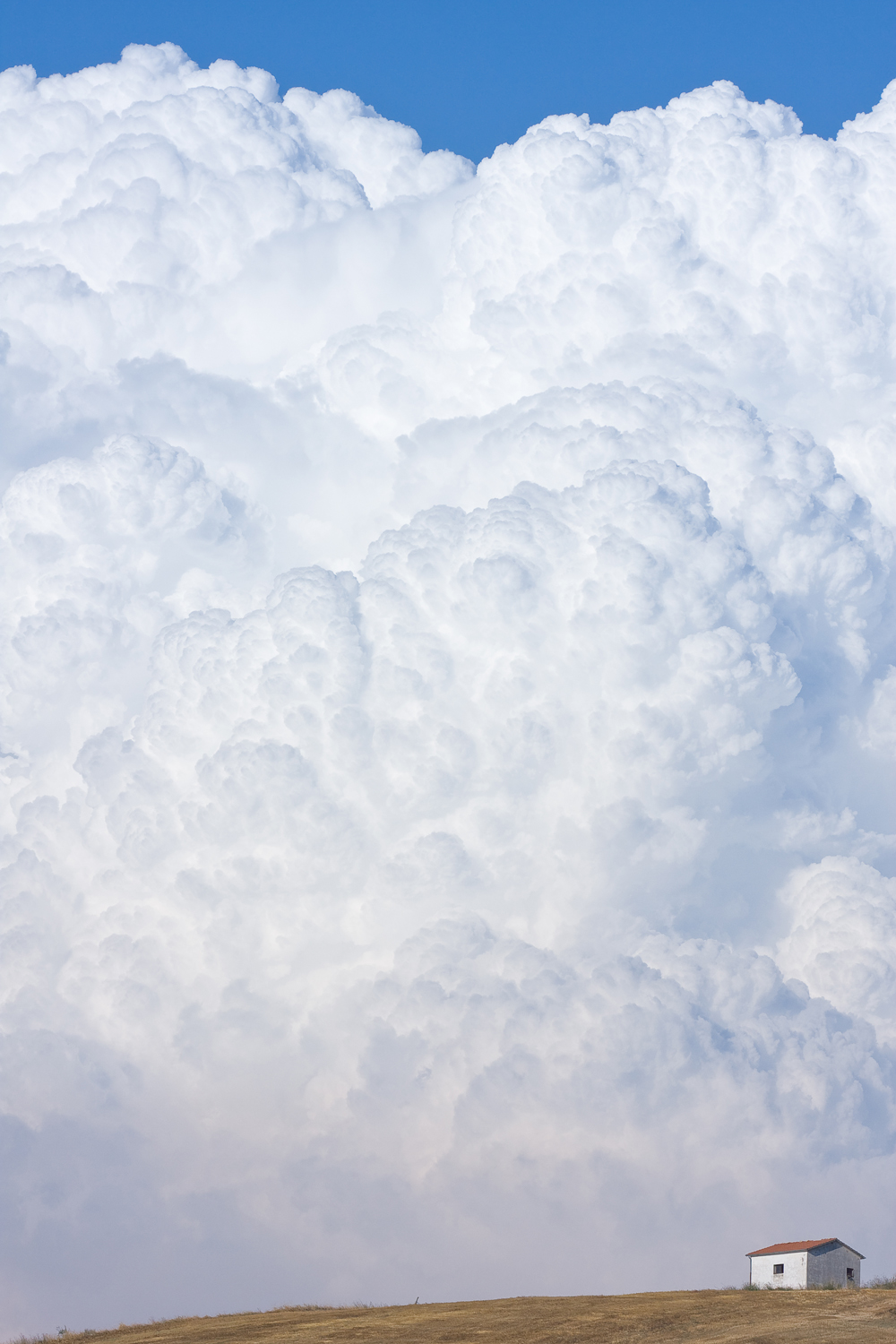 Behind a Little House (A), 2008 © Manuel Cosentino
Behind a Little House (A), 2008 © Manuel Cosentino
At Length: The Behind a Little House series was photographed over a two year period from 2008–2009. What were your considerations when making the initial photographs—what were you looking for?
Manuel Cosentino: I find it essential to work on long-term projects, because it allows me to develop a strong relationship with the subject and become familiar with all its idiosyncrasies. I select locations which seem to want to share a universal story and start collaborating with them. It is a two-way dialogue which entails a lot of listening on my part. Each photograph needed to play a specific role in the project—individually and as a whole—and I devoted a great amount of time, while on location, to thinking about this relationship and how it would have impacted the reading of the work. Each day was unique and had something to say, but only the sky in the first photograph could have started the series, and only the one in the last could have ended it.
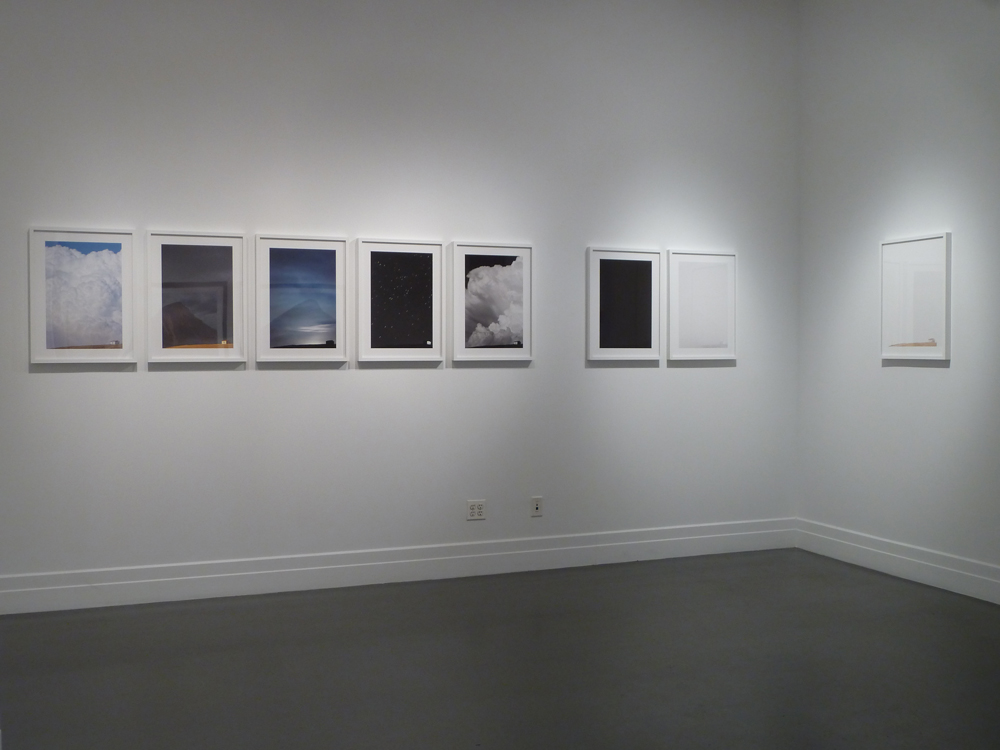 Behind a Little House installed at the Klompching Gallery, 2013. © Klompching Gallery
Behind a Little House installed at the Klompching Gallery, 2013. © Klompching Gallery
AL: The resulting series had not been made public until 2012, suggesting a period of refinement and editing. Talk us through how you arrived at your sequence of eight photographs, and why you have grouped them as a set of five, a pair and a single image?
MC: I always like to forget about the photographs for a while, so that I can see them for the first time once more—it clears my mind. I devoted a long time to the construction of the project as a whole, focusing on the dialogue between all the images. I considered carefully the number of pieces and wanted to create an installation which could have been easily exhibited around the world without taking up too much space. There in no secondary photograph; they’re all key. The three-set structure in some ways follows in the footsteps of the three-act-play, devised as far back as the Roman theater. They set the rhythm of the work and punctuate the overall dramatic structure of the project. The viewer is taken through a visual journey. It starts, in a literal sense, to becoming allegorical and symbolic, and finally the last piece reveals the conceptual side of the artwork.
AL: One of the questions that many people have asked is, “where is the little house?” You choose not to say exactly where it is. Why is this?
MC: I never mention where the little house is. I prefer it to transcend geographical placement and become an idea. We all live under the same sky after all …
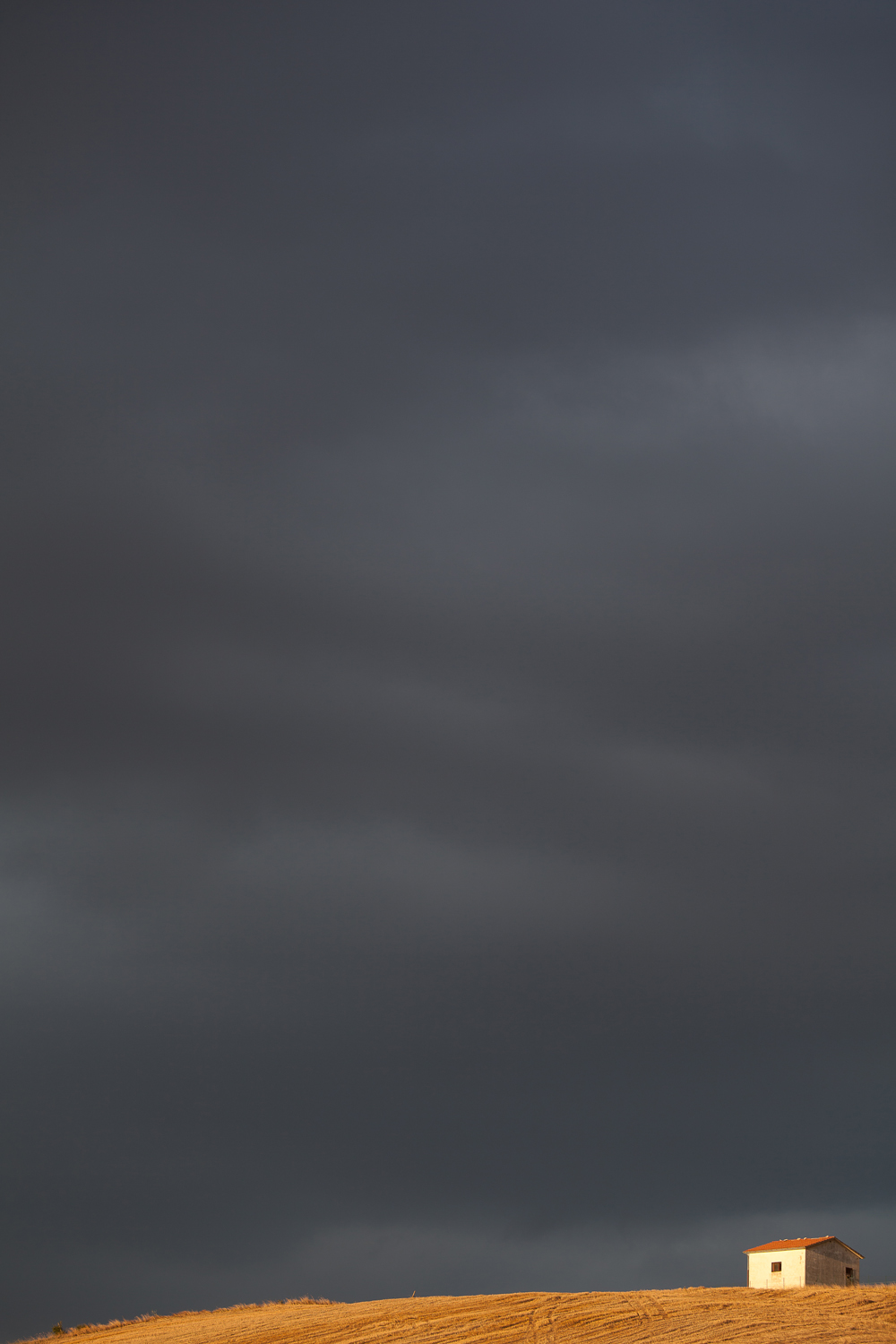 Behind a Little House (B), 2009 © Manuel Cosentino
Behind a Little House (B), 2009 © Manuel Cosentino
AL: So, the title itself tells us that the work is not so much about the house, but rather about the sky behind. Is the sky a metaphor for a bigger concept?
MC: Throughout the work there is a stratification of layers that anyone can choose to explore or not—it’s up to the public to decide how deep they want their involvement with the project to be. The title plays a fundamental role, as do the little house and the sky—they all work together. The last photograph in the series, and the participatory artist book, take the symbolic and metaphoric meaning of the work even further, allowing for all facets of the project to be fully experienced.
AL: In many ways, then, the photographs appear quite simple, and yet they speak in so many different ways to different people. Is there an overriding message in the work, or a sense of universality that you are seeking to portray?
MC: Simplicity is the best language to talk about anything complex. Anyone can relate to the little house. I chose it because it reminded me of the little house that I’d draw as a child. It holds a strong symbolic value and speaks the same universal language as the sky. When looking at the photographs, anyone pours into them his or her own life and sees them in a unique way.
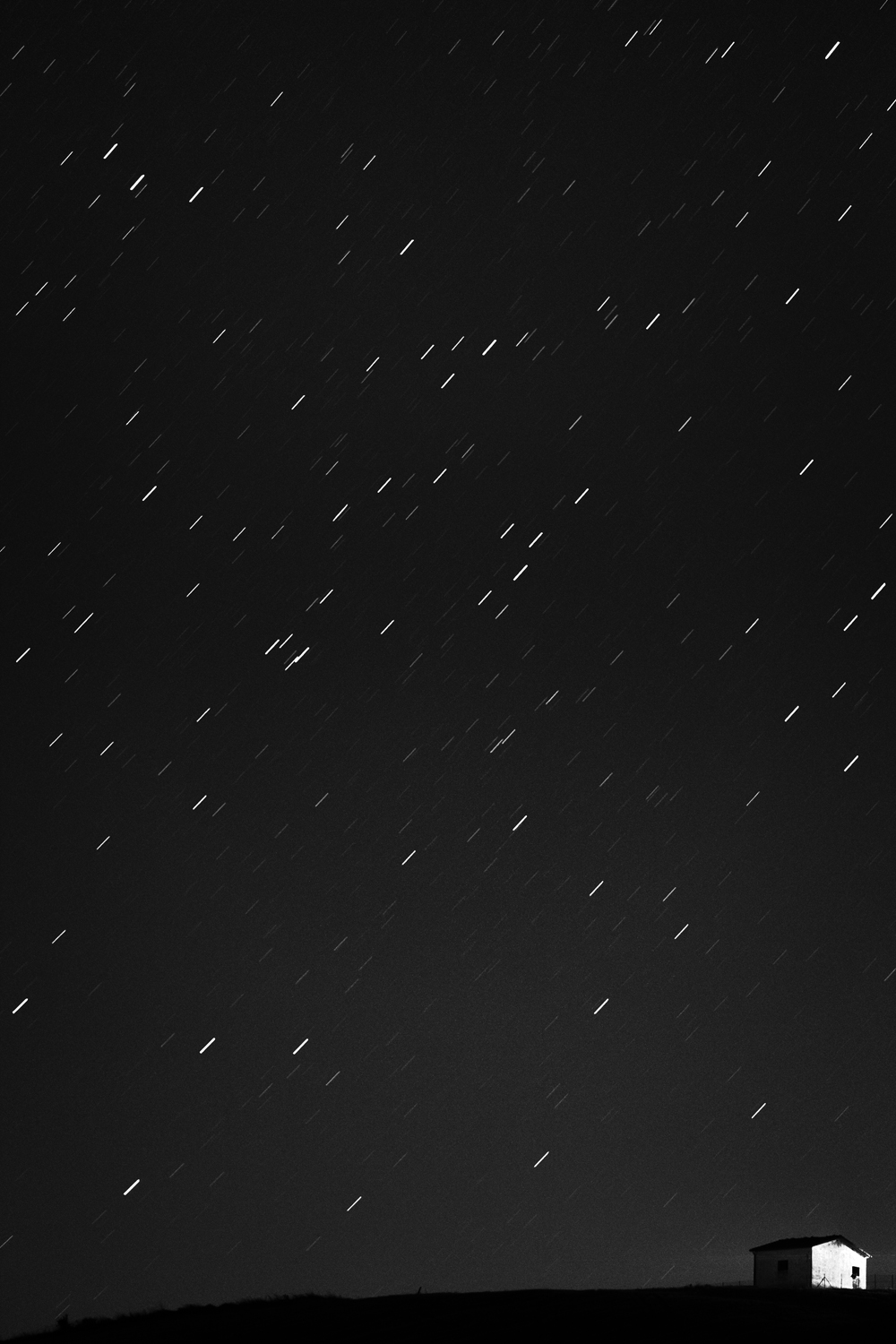 Behind a Little House (D), 2009 © Manuel Cosentino
Behind a Little House (D), 2009 © Manuel Cosentino
AL: An interesting element of the work is the addition of an artist book that visitors to the exhibited artworks are invited to draw in. Can you explain what this is and what it means to you?
MC: I am interested in exploring alternative ways to present, interact with, and consume photography, as a way to activate and facilitate the dialogue between the artwork and the viewer. The participatory artist book allows me to develop a deeper bond with the public, and lead them from a position of observers to that of active participants. I always imagined it a little bit like a self-contained universe. The first photograph starts the series with a ‘Big-Bang’ and sets everything into motion; the last is a new beginning—it represents that piece of ‘carte blanche’ that we are all given with our lives. By drawing in the book, anyone is at the same time breathing life into it, keeping it alive page after page, and is also responsible for his or her contribution within a wider context.
AL: Besides inviting the public to become part of the project, you contributed yourself to the artist book with the first drawing, featuring two power plants towering behind the little house. Why have you chosen this subject?
MC: People coming to the exhibitions are first drawn to the wall-mounted photographs and are meant to happen upon the participatory artist book afterwards. It is at this time that, suddenly, the power plant drawing starts to suggest a further layer of interpretation. It was inspired by one of Mitch Epstein’s most famous photographs from the American Power series. When looking at ‘my little house’ embraced by pristine skies, and ‘Mitch Epstein’s little house’ dwarfed by power plants—they might look like two very different and distant places. But I strongly believe that they’re not that far apart ….
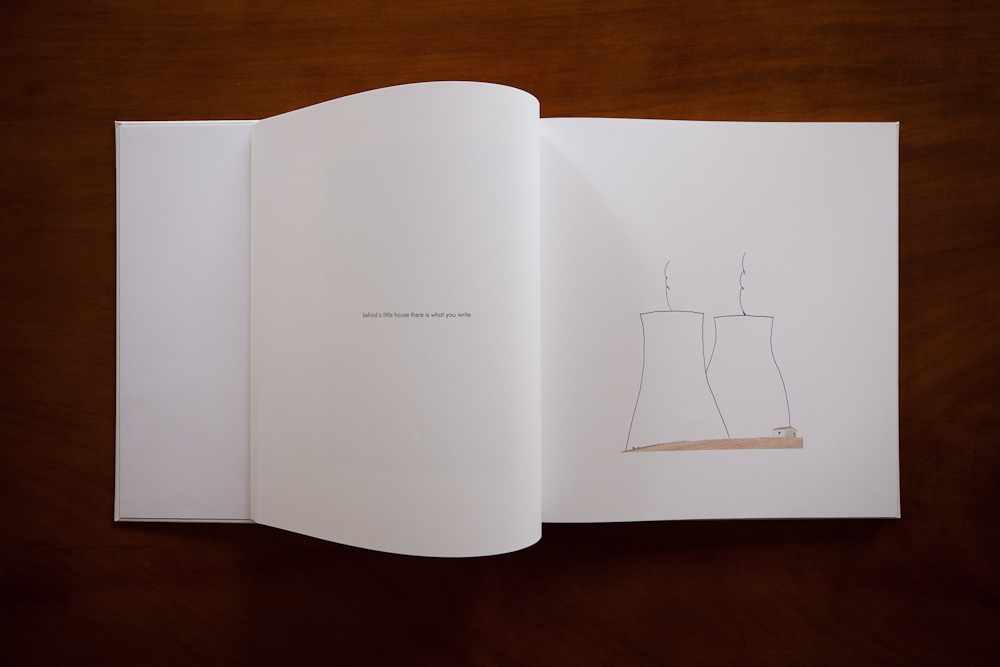 Behind a Little House, artist book. © Manuel Cosentino
Behind a Little House, artist book. © Manuel Cosentino
AL: Each exhibition of the artwork has a new book. What happens with the books at the end of each exhibition?
MC: To respect the participant’s trust, the artist book is not for sale and at the end of each exhibition it becomes part of my personal collection, or is donated to a public/private institution. Furthermore, anyone who has taken part in the project is credited at the end of all future books. That is also where my name first appears in the artist book, as I don’t see myself as its author, but as one of the many people who breathed life into it. In the future I envision an exhibition where all participatory artist books will be brought together and exhibited as a whole.
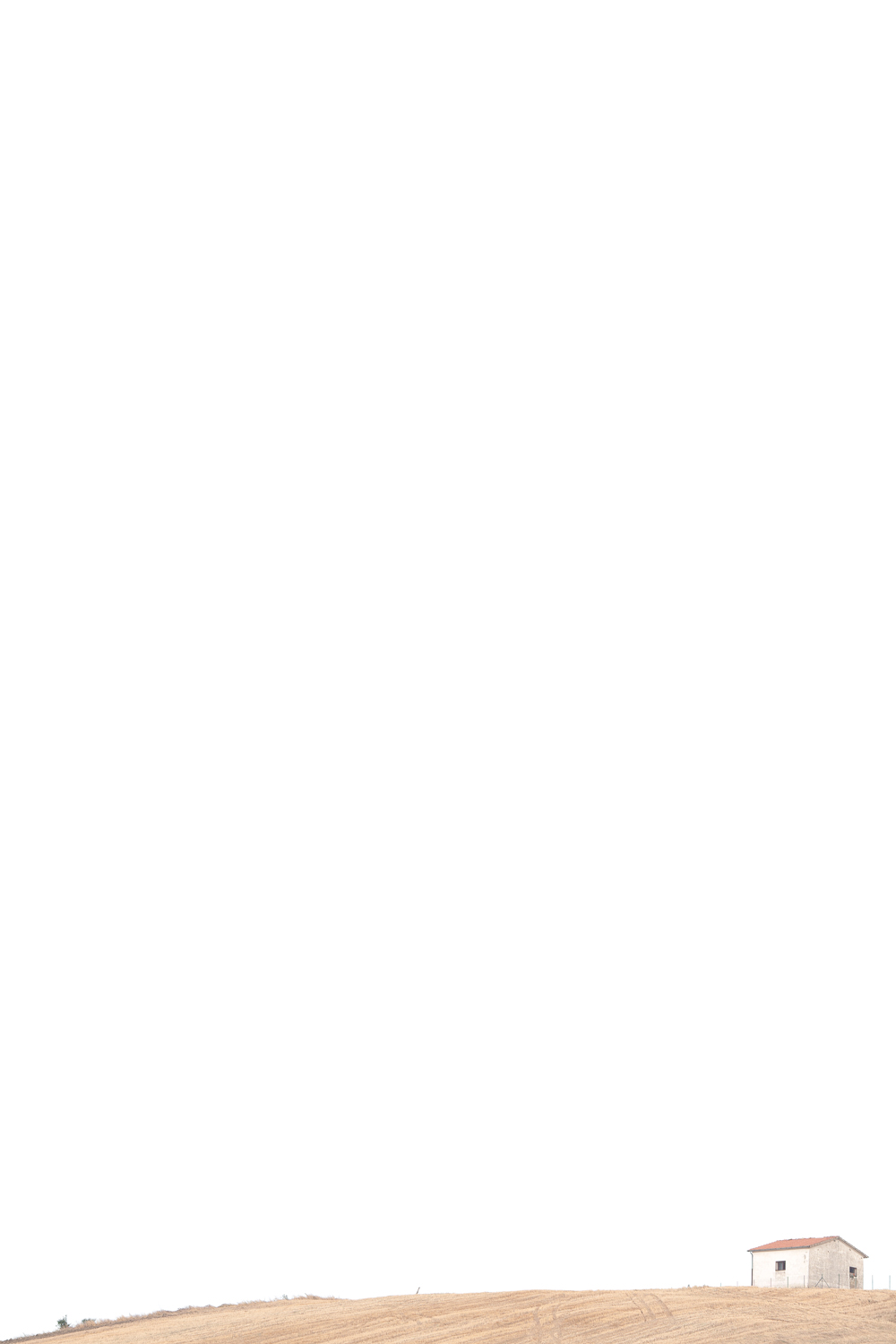 Behind a Little House (H), 2009 © Manuel Cosentino
Behind a Little House (H), 2009 © Manuel Cosentino
AL: This is your first body of work as an artist, and it has been embraced by so many people—going viral on social media/blogs/online magazines, exhibited across a number of venues in Europe, Asia and the USA—and has been acquired for collections, including the Bibliotéque Nationale in Paris. Are you now working on something new?
MC: I think that it is very ironic, for my first body of work to go viral. I often refer to it as an intimate participatory art project, specifically because I have chosen to sacrifice the dissemination opportunity given by large-scale web 2.0 distribution/interaction methods. I’ve chosen instead, to communicate through the intimacy of a book—in order to reclaim a physical connection with the public. The media attention has been truly exciting and has allowed me to reach an audience far beyond my wildest dreams. However, I do believe that the photographs and the participatory artist book should be experienced in the flesh. As for the future, I have been working relentlessly on my next project, which will be released in 2014, following a four-year obsession started—similarly to the Behind a Little House project—from a simple spark.
Manuel Cosentino is an Italian artist who was selected as one of the exhibiting artists for Klompching Gallery’s 2013 edition of FRESH: The Wall/The Page/The Internet, July 17–August 10, 2013.